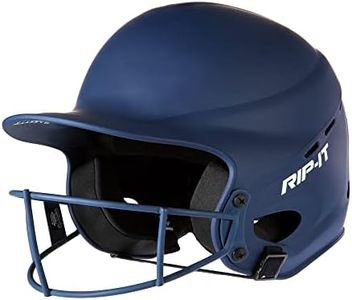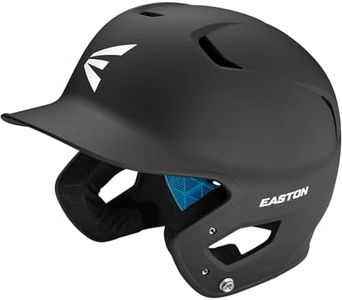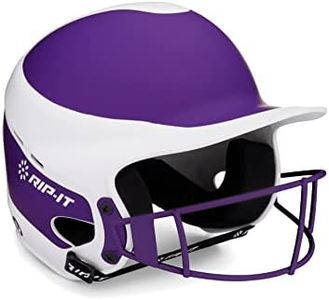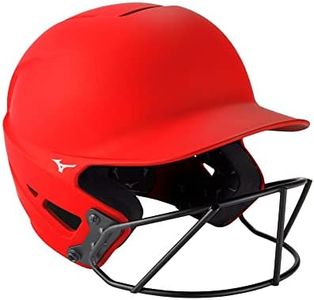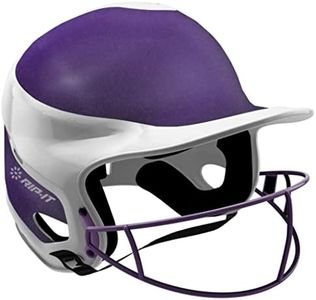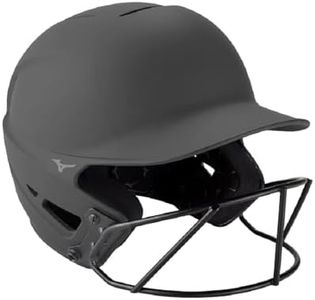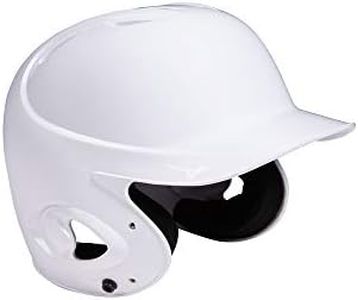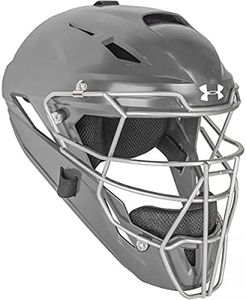We Use CookiesWe use cookies to enhance the security, performance,
functionality and for analytical and promotional activities. By continuing to browse this site you
are agreeing to our privacy policy
10 Best Softball Helmets
From leading brands and best sellers available on the web.Buying Guide for the Best Softball Helmets
Choosing the right softball helmet is essential for both safety and comfort on the field. A well-fitted, well-ventilated helmet will offer protection while ensuring you can focus on the game without distraction. Instead of just grabbing any helmet, you should consider the main features that affect performance, protection, and how enjoyable it will be to wear your helmet during play. Understanding the most important specs will help you find a helmet that matches your playing level, age group, and league requirements.Size and FitSize and fit refer to how well the helmet sits on your head. This is probably the most important factor, as a helmet that's too tight will be uncomfortable, while one that's too loose won't offer proper protection and might even fall off during play. Helmets generally come in youth, intermediate, and adult sizes based on head circumference. It's important to measure your head (usually just above the eyebrows and around the widest part of your head) and check it against the manufacturer's sizing charts. If you're between sizes, look for adjustable features like a dial or extra padding. Always try it on if possible—when you move your head, the helmet should stay in place and feel snug but not pinch.
Face Guard (Cage or Mask)The face guard, also called a cage or mask, is designed to protect your face from balls or bats. Some helmets come with a built-in face guard, while others allow you to add or remove one. There are open and closed styles, with open offering a wider field of vision, while more enclosed cages generally offer greater protection. Youth leagues usually require face guards for safety, but some older or more competitive leagues may let you choose. Decide based on your league’s rules and your comfort—young or newer players might feel more secure with full coverage, while experienced players sometimes prefer a lighter setup for better sightlines.
VentilationVentilation refers to the helmet's ability to allow heat and sweat to escape. Look for helmets with multiple or larger air vents if you play in hot weather or sweat easily, as this will help keep you cool and comfortable. Helmets with minimal ventilation may feel hotter and could lead to discomfort during long games or practices. Consider how long and often you play, and if staying cool is a priority for you.
Padding and Liner MaterialThe padding inside determines both comfort and impact protection. Softer, thicker pads tend to feel more comfortable and absorb shocks better, but can make the helmet bulkier. Some liners use moisture-wicking materials to keep sweat from dripping, which is helpful if you play often or in hot conditions. Make sure the padding feels good against your head, with no hard spots or gaps. If you're sensitive to certain materials, look for hypoallergenic or antimicrobial liners.
Certification and League ApprovalCertification ensures that the helmet meets safety standards set by organizations such as NOCSAE (National Operating Committee on Standards for Athletic Equipment). Always check for certification stickers or marks, especially if your league has specific requirements—some won’t allow players with uncertified helmets. Matching the certification to your league is non-negotiable, so check the rulebook or ask your coach if you’re unsure.
Chin StrapA chin strap keeps the helmet secure during play, especially in case of sudden movement or falls. Some helmets include a chin strap; others sell it separately. Adjustable straps allow you to achieve a snug fit. Players who are very active or play certain positions (like catcher or base runner) may prefer a helmet with a reliable chin strap to ensure it never comes loose.
WeightThe weight of the helmet impacts comfort and mobility. Lighter helmets are generally easier to wear for long periods and may help you move your head more quickly. However, extra protection and padding often mean a slightly heavier helmet. Choose a weight you’re comfortable with—if you play long games or get tired easily, a lighter option might be better, but always balance this with your need for protection and confidence on the field.

